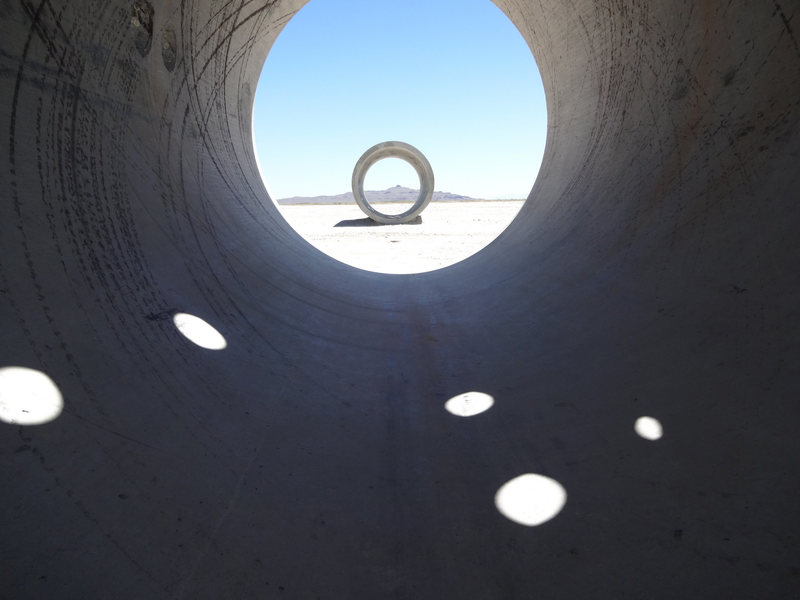
The first time Nancy Holt visited the American West, she didn’t sleep for four days. Growing up an only child in the Northeastern part of the U.S. had instilled in her a feeling of displacement, and she felt a kinship to the open desert space.
Years later she likened its boundless landscape to her own internal vastness, saying, “I was experiencing it on the outside, simultaneously with my spaciousness within. I felt at one.”Holt’s artistic career would go on to revolve around the remote western landscapes to which she felt so close. She began creating outdoor installations on large scales at a time when women weren’t thought to be capable of such grand pieces. Her work not only reshaped the landscape art form, it broke gender stereotypes in the process, helping pave the way for artists such as Maya Lin.
Holt was the first of the modern land artists to incorporate astronomy, the Earth’s rotation, and the elements of time and location into her sculptures. She developed pieces that engaged the viewer by framing their connection with nature. She sought to integrate her outdoor installations with the natural landscapes on which they were built, promoting environmental conservation and activism long before her peers. Land rt started out in the late 1960s and early ’70s as a male-dominated field, “with a few exceptions,” as James Meyer put it in a 2007 interview with Holt for the book Sightlines. And it would take a while for the artistic movement to catch up to Holt’s vision.

The movement’s beginnings are typically pegged to late 1968, when the group exhibition Earthworks at the Dwan Gallery in New York City featured photographs of large-scale outdoor installations. (Eventually the terms “earthworks” and “land art” would come to represent different distinctions of a similar field, earthworks consisting of only natural materials while land art utilized manmade structures in or on the Earth.) The movements were a rejection of the commercialization and arbitrary hierarchies of insular art galleries. Opting to build works in natural spaces rather than for gallery walls served as a commentary on the exclusivity of the art world. Pieces displayed out in the open were foils to the esoteric paintings and sculptures that ended up hidden away by private collectors. But many of these early works lacked the kind of depth that could be found later in Holt’s sophisticated sculptures.
Holt studied biology at Tufts University, but made time to attend art lectures at MIT. Viewing abstract paintings alongside magnified images of cells helped her to perceive a strong connection between art and science. She traveled to New York City during breaks from school, and soon met Robert Smithson. They married in 1963. Over the next few years Smithson and other American artists would lay the foundations for the land art movement.
Holt’s role in the movement began as a filmmaker and photographer, and she documented the processes of Smithson and others, including Richard Long and Michael Heizer, as they created early earthworks such as “A Line Made by Walking” and “Double Negative”. Documentation played an integral role,…
The post The Importance of Nancy Holt, the Woman Who Revolutionized Land Art appeared first on FeedBox.